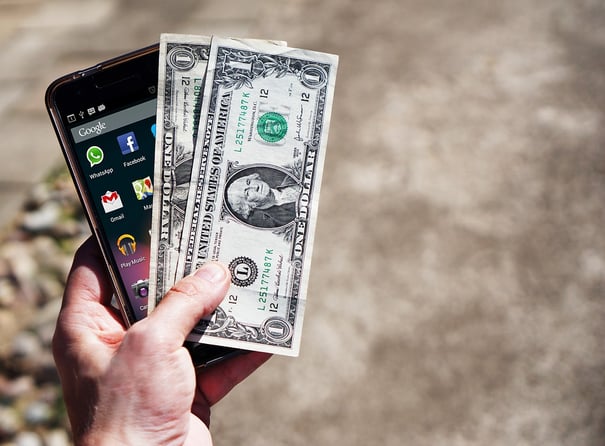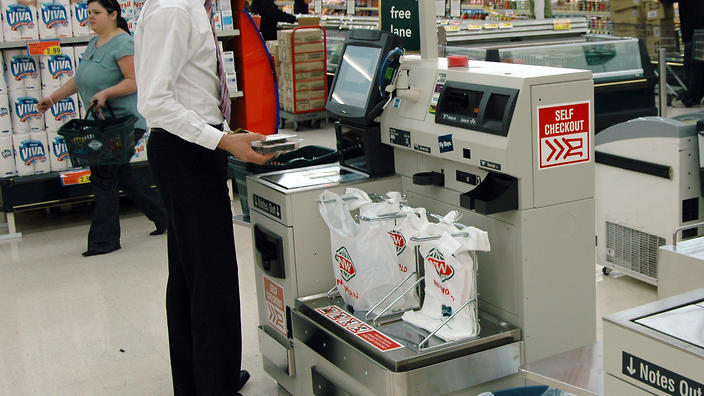It’s time to check in on grocery self-checkout. The technology debuted in 1992 and has been integrated into the vast majority of supermarket chains as well as newer regional stores. But, nearly since their inception, issues of theft and customer dissatisfaction have forced some stores to only selectively deploy the technology or, in some cases, to abandon it entirely. So, how does self-checkout check out?
A professor of food marketing argues that it isn’t a black and white issue and ultimately comes down to finding the right locations to fit the technology: “I think some of the stores are deciding that, on the balance, it’s a negative. Other stores, because they have a different composition of shoppers, are deciding to keep it.”
When considering the potential risks and benefits of such a system, grocery stores must juggle and balance multiple variables including labor costs, convenience, and the potential for theft.
Do Thieves Target Self-Checkout or Does Self-Checkout Make Thieves?
Despite the reduced labor costs associated with self-checkout, stores may actually lose money by providing opportunity, rationalization, and a ready-made excuse for shoplifting. Customers have developed tricks to get around the anti-theft measures on self-checkout machines, and often rationalize stealing from the store when they find the machines too difficult to operate. When caught, they can easily plead ignorance, saying they were confused by the technology and assumed they had paid for the item.
This puts stores in a difficult position, forced to either excuse the theft or brand their customers thieves and liars. This represents, per the Telegraph, “a legal and customer relations minefield,” as the theft is difficult to prove, especially when it comes to intent, and doing so would pit the store against their customers.
Thus, the question becomes, do the losses due to theft outweigh the savings on labor costs? Thanks to research at the University of Leicester, we now have some idea of how large these losses potentially are. The two-year study examined shoppers in Europe and the United States between 2013 and 2015 and found that stores that installed self-checkout experienced losses 122% greater than those without self-checkout. The authors are quick to note that it is impossible to know if these losses are the result of frustration with the technology, ignorance, or outright thievery. Regardless, in an industry with razor-thin profit margins, such losses cut to the bone.
“Unexpected Item in Bagging Area”
Those losses hurt, no doubt, but if customers were enthusiastically devoted to the technology, they would perhaps be a price paid for convenience and an enhanced customer experience. But no such adoration exists. It has become cliché to complain about the surly automated voice as it scolds shoppers for improperly moving their purchases from one side to the next.
Indeed, Consumer Reports surveyed shoppers to find out how self-checkout shapes their experience and found that, overall, about 1/3 of customers were not satisfied with it. Indeed, 30% reported that the systems do not properly function, 27% reported growing frustrated with customers ahead of them who have difficulty with the technology, 22% were dissatisfied with the amount of front end staff support, and 14% have simply given up and now eschew the technology.
Self-Checkout 2.0?

Yet, despite these problems, lowering overhead by reducing labor costs, and allowing customers to have the option of avoiding human contact while shopping have kept the search for a more efficient self-checkout, or surveillance, system alive.
Its current shortcomings, Erick Lee hopes, spell opportunity for the next generation of grocery automation. “The promise of self-checkout and the reality of self-checkout are two totally different things. It was this idea that you have this machine that will be able to help you and always work and there would never be a line. But unfortunately, what ended up happening was there’s kind of a line there, the machine doesn’t really work and people don’t know how to make it work.”
Lee co-founded Selfycart, an app that stores can subscribe to that allows customers to scan and purchase groceries as they go through aisles. When they have concluded their shopping, they are provided a QR code as proof of purchase. The platform debuted in independent San Francisco grocery stores with designs on expanding to chains across the nation.
As automation in grocery stores becomes more prevalent, such innovations will continue to pop up and seek to bridge the gap between the promises of self-checkout and the realities of its first fifteen years of existence.


